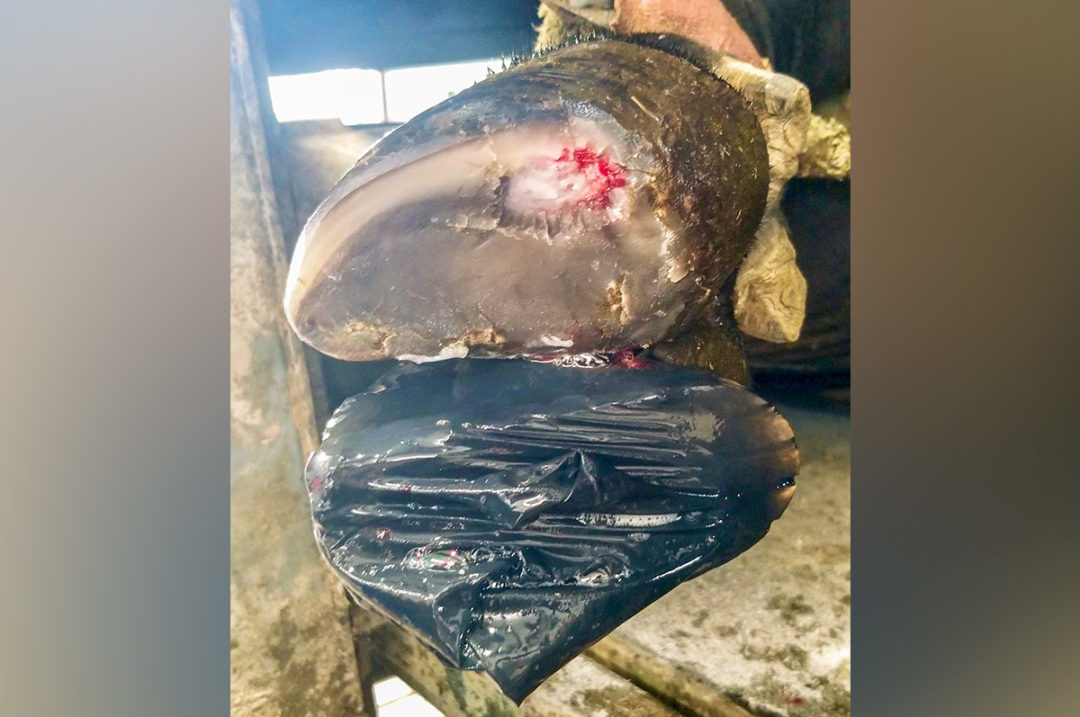Bovine lameness is a topic that I’m passionate about. Not only is it one of the costliest animal health issues to our industry, but it’s also a major animal welfare concern that we can mitigate. During my time at Kansas State University, I was fortunate to be part of a team that conducted bovine lameness research. Being raised in the purebred side of the beef business, I saw firsthand how important structural correctness, foot angle and hoof health are to a breeding program’s success and longevity.
When lameness issues arise, there are many things we can do as producers, and veterinarians, to help these animals recover and get back to a high level of performance. The sooner that you recognize and intervene in these lameness cases, the better your outcomes will be. I can’t emphasize strongly enough that if you treat a suspected case of “foot rot” with antibiotics and animals don’t show significant improvement in a couple of days, they need to be seen by a veterinarian or at least caught and re-evaluated. Don’t just give another round of antibiotics and waste valuable time while the issue worsens.
The effects of lameness
Lameness is the second-most costly animal health issue in the beef industry, next to bovine respiratory disease.
Bovine lameness costs the industry a great deal, not only in decreased weight gain but also with its negative impact on longevity in the cow herd. With the record-high costs of developing or purchasing a replacement female, you need her to stay in production as long as possible to be profitable.
The negative implications of reproductive failure due to the stress and pain associated with lameness is another area of significance to your herd’s health and productivity. When cattle are lame, their cortisol levels rise due to severe pain. This increase in stress hormones can negatively impact a bull’s semen quality and also lead to reduced cow fertility and higher rates of early embryonic death loss.
And of course, the lost performance in the form of decreased weight gain when those lame cattle aren’t getting to the bunk as frequently or out grazing is a huge hit to our industry’s bottom line.
It’s obvious that, from a business perspective, lameness is a big issue. Additionally, it’s a growing welfare concern. We all strive for our cattle to be healthy and maximize their genetic potential. Unfortunately, the chronic pain caused by lameness can lead to rapid deterioration and can become a serious welfare issue. Minimizing the amount and length of time those animals are in discomfort is crucial.

“Screw claw” is a condition where the small bones in the toe are misaligned, which leads to an overgrowth of the outside edge of the claw. Photo courtesy of Valley Vet Supply.
Common causes behind lameness
There are several factors that contribute to lameness in cattle.
Nutrition
Nutrition can be a big contributing factor to lameness and is one that we can actually control. In an effort to maximize gains, it’s not uncommon in heifer or bull development yards for young cattle to be pushed hard on a high-carbohydrate diet. When cattle are fed a “hot” ration and do not receive enough forage in the diet, we can see rumen acidosis develop (meaning their rumen pH is too low from the excessive carbohydrates they're ingesting). This can lead to poor hoof horn development and conditions such as white line disease and laminitis (more commonly known as “founder”) that lead to chronic pain and inflammation.
Genetics
Genetics definitely contribute to lameness risk. With increasing selection pressure on production traits such as carcass quality and growth, there has been a tendency to put less emphasis on traits such as fertility, longevity and structure. When purchasing new genetics or deciding which animals to retain in your herd, place a high priority on good hoof quality (no cracks or overgrowth), proper foot angle, and structural correctness to prevent lameness issues down the road. Many hoof problems have been proven to be heritable. “Screw claw” is a condition where the small bones in the toe are misaligned, which leads to an overgrowth of the outside edge of the claw. This predisposes them to problems such as sole ulcers and deep digital sepsis, which can be very difficult to treat.
Environment
Running cattle in rough country with lots of sharp rocks and difficult terrain can cause abrasions in the skin and hooves. In challenging environments, you may need to check cattle more often to make sure that bacteria haven’t taken advantage of that opportunity to invade where the skin barrier has been damaged. Having freestanding water and excess mud in pastures can predispose cattle to more foot rot issues as well. Concrete flooring also poses an environmental challenge, whether that be in dairies or in working systems. It wears down their toes, which causes the soles to become thinner. This can also lead to toe abscesses and infection in the P3 bone located at the end of the toe.
With the advent of dart guns, pasture doctoring looks a bit different than it once did. I still believe there is value in closely assessing the foot (where 90% of lameness is located). Some lameness cases are as simple as a rock between their toes or a sole/toe ulcer that needs to be opened up. Pulling up that foot to see what’s really going on can guide you in the best direction to go for treatment and help you determine if it's something you need to consult your veterinarian on or take to them for more aggressive treatment. When lameness is identified early in the disease process and treated appropriately, it has great treatment success rates.
I hope this information helps you to prevent and manage lameness in your cattle.










